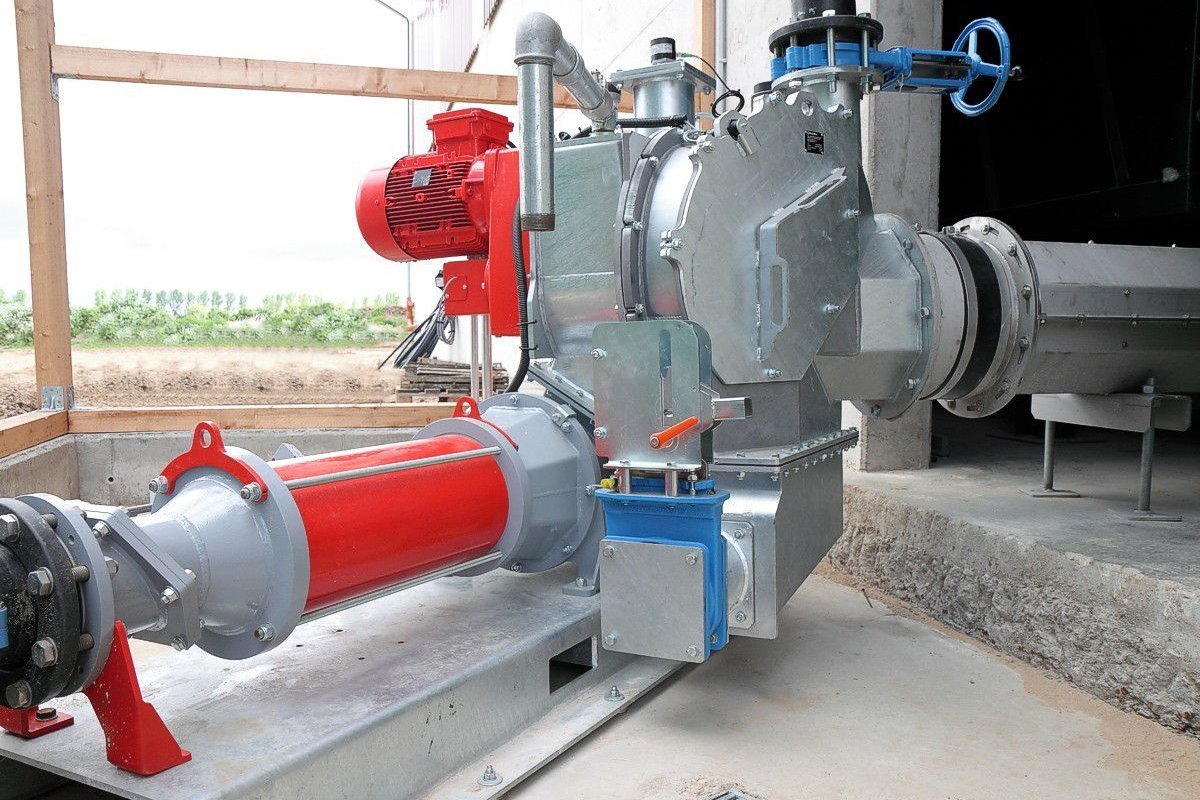Dry solid matter feeding vs. liquid feeding - reviewing options.
Important elements in all biogas plants: solid matter feeding
When all these points are taken into account, suitable solid matter feeding technology that can feed the biomass cost effectively must be installed in the biogas plant. Liquid waste from agriculture, such as manure and glycerin or residues from grease traps can usually be pumped directly into the digester using pumps. Because this often means waste that includes foreign matter such as stones, metal parts and impurities (e.g. wood, belts, etc.), we recommend the use of macerators and foreign matter separators to reduce the material to a manageable level.
Sanitary Practices
When using input materials of animal origin, such as abattoir waste and food waste, heating the input material to at least 70°C/ 150°F, for one hour and then macerating it to a max size of 12 mm/.475" ensures parasites and dangerous bacteria are neutralized. Proven systems for this process are contact-based macerators combined with positive displacement pumps. Vogelsang positive displacement pumps often pump viscous and abrasive waste safely, while a 12 mm honeycomb sieve in the RotaCut macerator ensures that all elements are reduced to the maximum permissible size. Special options ensure that no input material gets past the macerator untreated.
Improved feeding of dry biomass
Biogas plants are often fed with solid matter and dry feedstocks. The feeding processes can be divided into two categories: Dry solid matter feeding and liquid feeding. For dry solid matter feeding, the input materials are put directly into the digester. Feed screws are the most commonly used method, conveying the solid matter upwards and onto the organic suspension. The main advantage of this technology is the relatively low investment costs. However, the solid matter must be stirred by the mixers in the digester, which is only possible at very high energy levels. Also, this technique is not fully suited for long-fibered substrates (e.g. car grass, straw, or agricultural waste such as dung).
For liquid feeding, the biomass is first mixed with a liquid suspension, the digestate or so-called recirculate from the digester. This process is also called mashing. The resulting feed mash is then conveyed to the fermentation space (this usually means pumped). The advantages of this procedure are that the biomass arrives in the digester in liquid form and mixing requires significantly less energy consumption with a digester content that mixes well with the organic suspension. If the solid matter is also processed simultaneously, the reduced energy requirements are also accompanied by increased gas generation. This also significantly reduces the widespread problem represented by the formation of floating layers.
Alternatively, there are liquid feeding systems that can also feed organic waste with extremely different properties. Many biogas plants rely on such systems. This is either because they also want to use crops such as potatoes or beets or because the biomass used has extremely fluctuating properties (e.g. food waste or domestic organic waste). Systems such as PreMix are designed for these kinds of biogas plants. They can feed many different types of biomass reliably, easily, and well-mashed into the digester, meeting a basic requirement for the economic operation of these biogas plants.





